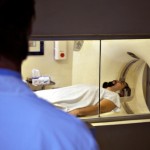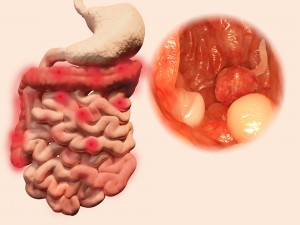Weekly health news roundup: fibromyalgia, multiple sclerosis, lump behind ear, and hypothyroidism
Bel Marra Health’s weekly health news roundup includes stories about fibromyalgia, multiple sclerosis, IBD, hypothyroidism, and lump behind ear. In case you missed these trending stories, we have compiled them together for your peruse.
These health news stories outline new treatment methods for fibromyalgia and multiple sclerosis, the causes and treatment for lumps found behind the ear, inflammatory bowel disease and gut bacteria, and how hypothyroidism (underactive thyroid) raises the risk of type 2 diabetes.
We hope these articles keep you educated in all things health-related.
 Fibromyalgia treatment with high-pressure oxygen, natural home remedies and exercise eliminate chronic pain
Fibromyalgia treatment with high-pressure oxygen, natural home remedies and exercise eliminate chronic pain
Fibromyalgia is a condition that causes chronic pain, but research suggests fibromyalgia treatment is possible with high-pressure oxygen. Roughly one in 70 Americans will be affected by fibromyalgia and, unfortunately, the condition is incredibly difficult to diagnose and treat.
Fibromyalgia can be caused by head trauma, a neurological infection, or even severe emotional distress. Symptoms of fibromyalgia include chronic pain, fatigue, memory loss, and mood swings.
A study conducted by Tel Aviv University found that women with fibromyalgia chronic pain significantly reduced – or even eliminated – their use of pain medicines following the hyperbaric oxygen treatment.
The researchers uncovered that the underlying factor for fibromyalgia is the disruption of the brain mechanism that processes pain. Lead researcher Dr. Shai Efrati said, “As a physician, the most important finding for me is that 70 percent of the patients could recover from their fibromyalgia symptoms. The most exciting finding for the world of research, however, is that we were able to map the malfunctioning brain regions responsible for the syndrome.” Continue reading…
 Multiple sclerosis treatment, faster MRI diagnosis method helps reduce brain inflammation
Multiple sclerosis treatment, faster MRI diagnosis method helps reduce brain inflammation
New multiple sclerosis treatment has been uncovered, along with faster MRI diagnosis method to help reduce brain inflammation. Researchers from the University of Alberta Faculty of Medicine and Dentistry have uncovered a new pathway for multiple sclerosis (MS) treatment. The aim of the new treatment is reducing inflammation in the brain, as it is a contributing factor for muscle disability in multiple sclerosis.
Current multiple sclerosis treatments target the immune system in order to reduce inflammation in the brain. Unfortunately, the increasing strength of the medications weakens patients’ immune system, making them more susceptible to side effects and other illnesses. For the current study, the researchers examined the enzyme called granzyme B in cytotoxic cells as a possible therapeutic target to combat inflammation without significant suppression of the immune system.
Cytotoxic cells are used in the body to help fight off infection and kill virus-infected cells. But in multiple sclerosis, they are redirected against the host. Granzyme B damages nerve cells and other areas in the brain, but the researchers found that suppressing granzyme B with serpina3n – a newly discovered inhibitor – could significantly reduce the progression of multiple sclerosis in human cells and preclinical models.
Senior author Fabrizio Giuliani said, “We can interfere with some of the weapons these cytotoxic cells use to induce damage to the nerve cells in the brain, but without disrupting the other positive functions that these cells have. This molecule, serpina3n, will block the damage caused by granzyme B that induces the neurodegeneration in this disease, and the neurodegeneration strongly correlates with the disability.” Continue reading…
 Lump behind ear, painful and painless swelling, causes, symptoms, and treatment
Lump behind ear, painful and painless swelling, causes, symptoms, and treatment
Lump behind ear symptoms will depend on what is causing the problem and whether or not the lump has become inflamed or disturbed in any way. For example, if you scratch it to the point where it bleeds, it could become infected, which makes it much worse.
Although statistics are not available, we do know that cysts behind the ear are rather common. The symptoms of a cyst behind ear listed below give you a sense of what it is like to have such a mass.
Cyst behind ear symptoms:
- Small soft lumps
- Pimple-like bump
- Pain
- Fever or chills if cyst is infected
If you have a history of acne, it will likely be easy to identify lumps behind the ears and quickly realize that there is nothing to worry about. For others, trying to figure out what the lump is may be a little harder.
When doing a self-check, ask yourself, does the lump feels soft? If it does, then it could be a cyst or fatty tissue. Ask yourself, is the spot tender and painful when I touch it? In cases where a person feels slight pain, it is often a pimple or an abscess forming. Of course, you will want to take note of any other symptoms such as fever or chills. Continue reading…
 Inflammatory bowel disease (IBD) linked to diversity of viruses and gut bacteria
Inflammatory bowel disease (IBD) linked to diversity of viruses and gut bacteria
Inflammatory bowel disease (IBD) is linked to diversity of viruses and gut bacteria. The findings come from researchers at the Washington University School of Medicine. The researchers found that patients with inflammatory bowel disease had a greater variety of viruses in their digestive system compared to healthy volunteers, suggesting that viruses may play a role in inflammatory bowel diseases.
Research has revealed that changes to the gut microbiome are associated with obesity, diabetes, metabolic syndrome, and inflammatory bowel disease. The latest research is the first to find a link between inflammatory bowel disease and changes to viruses in the human body and their genes. The researchers suggest that the results may indicate that viruses have an unrecognized role in obesity and diabetes, as well as inflammatory bowel diseases like Crohn’s disease and ulcerative colitis.
Senior author Dr. Herbert W. Virgin said, “This is the tip of the iceberg. A significant portion of the viral DNA we identified in these patients is unfamiliar to us — it comes from newly identified viruses we don’t know much about. We have a great deal of groundwork to do, including sequencing the genetic material of these viruses and learning how they interact with the gut and gut bacteria, before we can determine if changes in the virome cause these conditions or result from them.”
The researchers studied three groups of patients with Crohn’s disease or ulcerative colitis. In each group, viral DNA was compared between the IBD patients and healthy individuals. Dr. Virgin explained, “Much of the increased viral diversity in participants with inflammatory bowel diseases was in the form of bacteriophages, which are viruses that infect bacteria and can incorporate themselves into the bacteria’s genetic material.”
The researchers speculate that the changes in the gut that diminish bacteria in IBD may unleash bacteriophages in the dying bacteria. Or, introduction of new bacteriophages may trigger a reaction in the digestive system, causing the disorder. Continue reading…
 Hypothyroidism (underactive thyroid) raises risk of type 2 diabetes
Hypothyroidism (underactive thyroid) raises risk of type 2 diabetes
Hypothyroidism (underactive thyroid) raises the risk of type 2 diabetes, according to a new study. The findings revealed that the risk still remained even in those patients who had their hormone levels under control.
Hypothyroidism is characterized by the insufficient hormone production, which thus leads to a slower metabolism, which can contribute to weight gain. Previous studies found a link between hypothyroidism and reduced insulin sensitivity, which is a precursor to type 2 diabetes.
The study took place over the course of eight years, tracking nearly 8,500 seniors over the age of 65. Blood samples were taken from the participants to measure blood sugar as well as thyroid function. The participants were re-evaluated every few years to check on type 2 diabetes. Continue reading…
-
Weight Loss Resolutions 10 Reasons Not To Make Them
Its New Years time again and traditionally people resolve to change th
-
Weight Loss Secret – Learning to Say No
Weight Loss can be attained to a great e
-
Greatest Abdominal Workouts
Keeping in shape comes with massive positive aspects for a person&r
-
What Are Some Common Weight Loss Mistakes People Make?
There are hundreds of mistakes that people make when they are trying
-
This Is Why Rice Cakes Are Bad For Weight Loss
If you are on a low fat diet, and fighti
-
Are There Foods To Avoid When Trying To Lose Weight?
When youre trying to lose weight, what are the foods to avoid at
- DON'T MISS
- Lose Belly Fat Tips
- What is my best approach to eating well?
- Choose The Right Exercise Equipment For Your Home
- Easy Ways to Lose Weight on a Budget
- The 10 Commandments Of Natural Weight Loss
- Learn How Coconut Oil Helps In Weight Loss
- Know The Advantages Of Hcg Weight Reduction Eating Plan Ideas
- Healthy aging blood test helps diagnose Alzheimer’s disease and dementia
- Tips for How to Eat Less Food Calories
- Avoid weight gain during holidays




